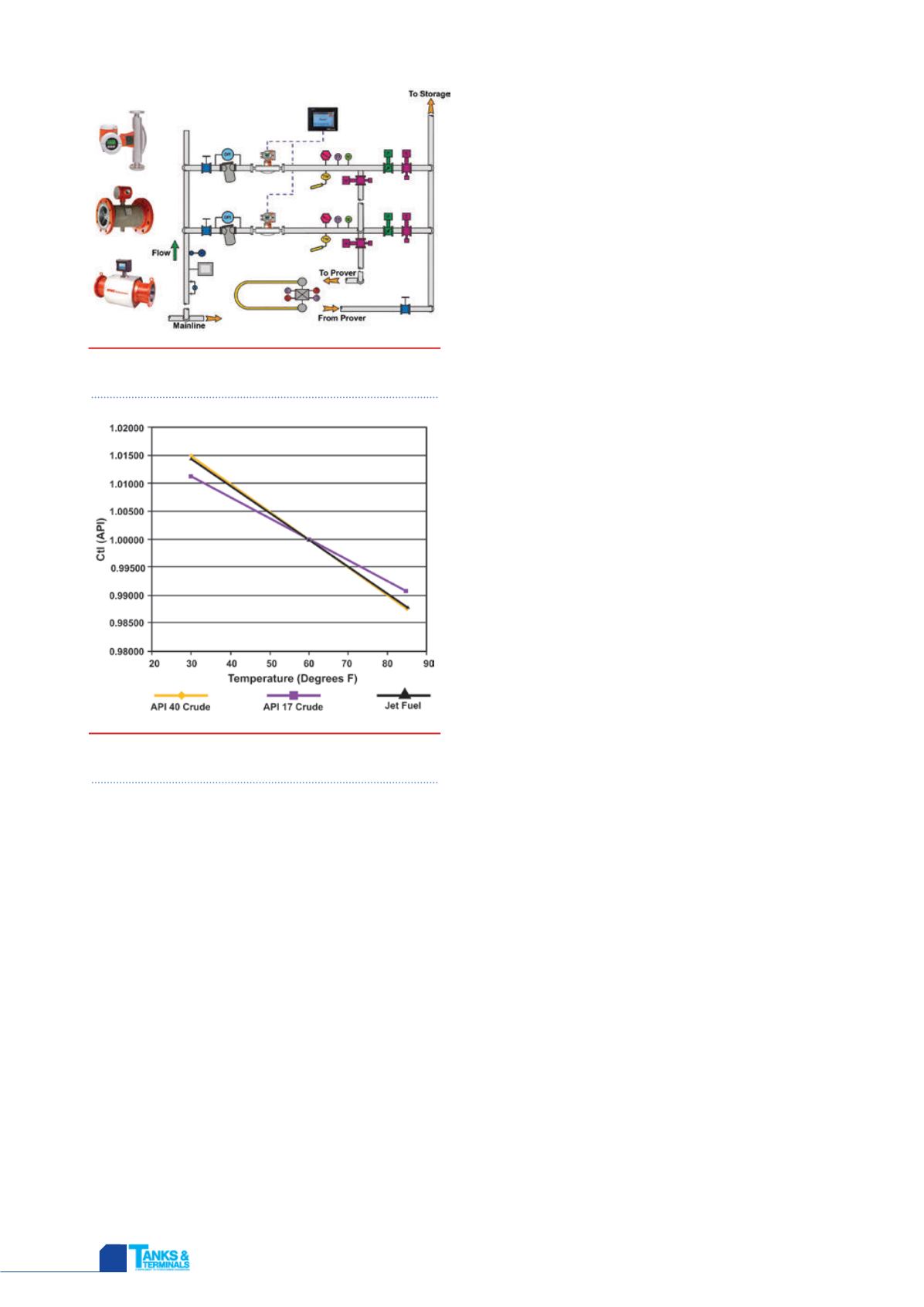
HYDROCARBON
ENGINEERING
76
Through the use of a measurement system, the
accessories that aid in removing entrained solids and gas,
and the dedicated, dynamic volumetric prover, the error
of the system is held to a very small amount. A meter’s
error tends to be random for a constant set of conditions,
which usually cancels out statistically and can be
estimated and accounted for during measurement, unlike
systematic or biased error, which are consistent
measurement errors.
Tank gauging
A metering system’s accuracy and repeatability is superior
to another common technique for measuring custody
transfer transactions at tank farms: tank gauging. Tank
gauging is the measurement of static quantity volume of
liquid hydrocarbon products in bulk storage tanks, a
process used for inventory control, oil movement and
operations, leak detection, and, in some cases, custody
transfer. There are many factors in tank gauging that
impact the measurement and calculation of tank volume
and introduce a larger degree of uncertainty and potential
bias for error. Simply put, with tank gauging, there is more
opportunity for error in measurement, sometimes
significant. Often the errors found in tank gauging are
biased or systematic, based on environmental conditions
or limitations with the instrumentation that performs
measurement. These kinds of errors do not cancel out
statistically. Instead, they tend to accumulate and lead to
financial reporting errors.
The shape and size of the container, the tank, is often
subject to environmental stresses, which affect the
accuracy of measuring its volume. Tank walls expand in
the heat, for example, but not always evenly, sunlight
focused on one side of the tank can cause expansion.
Hydrostatic pressure can also change the shape of the
tank. Tank volume is also affected by deadwood, the
volume of the piping and other objects in the tank, as well
as from the effects of floating roofs. The weight of
product in a tank can sometimes cause a diaphragm effect
on the tank bottom, sinking when the tank is full. Tank
walls can erode, too, changing the volume. Sediment that
accumulates unevenly on the tank bottom can also affect
the measured volume inside the tank.
While tank imperfections are accounted for in tank
capacity tables (TCTs), which are used to calculate
product volume in a tank, they are usually based on
external measurements of the tank, which can miss
internal, undetected defects. Verification of TCTs occurs
only periodically, and might not account for changes in
the tank volume between inspection and verification.
Product characteristics sometimes cause error in
measurement by tank gauging. If the product in the tank
contains water, it can separate and settle at the bottom
of the tank. Volume calculations need to account for this
free water, which is fairly easy to do in product that is
lighter than water, such as light crude oil or refined
product. In that case, there is an easily discernable border
between water and product. But if the product is heavier
than water, thick crude oil, for example, free water forms
an emulsion and its exact level is difficult to calculate,
possibly causing error in measurement.
Particulates exist in product, and must be accounted
for, too. In order to determine the amount of solid
suspended in product, tank gauging relies on spot
sampling. If the solids are unequally distributed in the
product, spot samples may not accurately measure the
amount of solids, even if multiple samples from various
levels in the tank are taken. Any error in measuring the
solids causes error in tank gauging measurement.
Likewise, tank gauging relies on spot sampling to
measure temperature. The size and volume of terminal
storage tanks are quite large and, therefore, the
temperature of the product is likely to vary in the tank
and be incorrectly measured by spot sampling. Because
temperature is one of the largest variables that affect the
volume determination of product, spot sampling
temperature is highly likely to cause bias error in
measurement. Even if the product in the tank is regularly
mixed to reduce errors caused by spot sampling, there is
still chance of error from spot sampling.
The actual process of measuring through tank gauging
may contain errors. The likelihood of errors in tank
Figure 2.
Integration of dedicated volumetric
prover shown with various meter technologies.
Figure 3.
Temperature effects on liquid and
utilisation to calculate the net standard volume.


